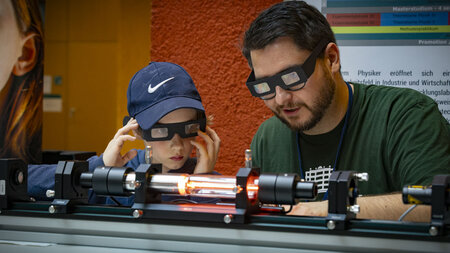Eintrag in der Universitätsbibliographie der TU Chemnitz
Wielage, Bernhard ; Nestler, Daisy ; Todt, Andreas ; Roder, Kristina ; Kroll, Lothar ; Spange, Stefan ; Tröltzsch, Jürgen
Keramische Verbundwerkstoffe auf Basis thermoplastisch verarbeitbarer schnell vernetzbarer Precursoren für die CFK- und CMC-Herstellung
Preparing ceramic matrix composites that are useful in e.g. aerospace industry, comprises preparing thermoplastic fiber-plastic composite material, molding, converting into thermoset fiber-plastic material, and reacting with carbon matrix
Kurzfassung
Es wird ein Verfahren zur Herstellung von Keramikmatrix-Kompositen vorgestellt, das die Herstellung des Matrixpolymers unter Einsatz von Verfahren nach dem Stand der Technik ermöglicht. Bei dem Verfahren erfolgt eingangs die Herstellung eines thermoplastischen Faser-Kunstoff-Verbundwerkstoffs mit einer Faserverstärkung und einem thermoplastischen Matrixpolymer und dessen Formgebung mit Verfahren der Thermoplastverarbeitung, wie bspw. Spritzgießen. Der thermoplastische Verbundwerkstoff wird in einen duroplastischen Faser-Kunststoff-Verbundwerkstoff umgewandelt und anschließend zu Matrixkohlenstoff umgewandelt, das der Erzeugung des faserverstärkten Kohlenstoffs (C/C) unter Erzeugung des CMCs dient.
Kurzfassung in englisch
#CMT# #/CMT# The method comprises preparing a thermoplastic fiber-plastic composite material having viscosity of 100-500 Pa.s with a fibrous reinforcement and a thermoplastic matrix polymer comprising phenol-based polymers such as novolacs or their mixtures with furfuryl components, molding the material without cross-linking, converting thermoplastic fiber-plastic composite material into a thermoset fiber-plastic composite material immediately after the injection molding, and reacting the polymer matrix with carbon matrix for forming fiber-reinforced carbon to form ceramic matrix composites. #CMT# : #/CMT# The method comprises preparing a thermoplastic fiber-plastic composite material having viscosity of 100-500 Pa.s with a fibrous reinforcement and a thermoplastic matrix polymer comprising phenol-based polymers such as novolacs or their mixtures with furfuryl components, molding the thermoplastic material without cross-linking, converting thermoplastic fiber-plastic composite material into a thermoset fiber-plastic composite material immediately after the injection molding, and reacting the polymer matrix with carbon matrix for forming fiber-reinforced carbon to form ceramic matrix composites. The composite material preparation step is performed with or without additives. The molding and the conversion steps are carried out simultaneously in a molding tool for the processing of thermoplastics. The conversion step is carried out by integrating a formaldehyde equivalent crosslinker in the thermoplastic fiber-plastic composite. The reacting step is carried out by pyrolysis to form a crack region. The method further comprises carrying out infiltration of the crack region using silcon-based group to form silicon carbide or its other compounds such boron, silicon carbonitride, siliconborocarbonitride, silicon oxycarbide, where the infiltration step is performed in the region near crack. #CMT#USE : #/CMT# The method is useful for preparing ceramic matrix composites (claimed) that are useful in aerospace industry, industrial furnaces, and brake disk. #CMT#ADVANTAGE : #/CMT# The method is capable of preparing ceramic matrix composites with complex geometries, wide range of shot sizes and weights, high reproducibility, short process times, full automation, and high yield. #CMT#DESCRIPTION OF DRAWINGS : #/CMT# The figure shows a flow diagram of a method for preparing ceramic matrix composites.
| Universität: | Technische Universität Chemnitz | |
| Institut 1: | Professur Verbundwerkstoffe und Werkstoffverbunde | |
| Institut 2: | Professur Strukturleichtbau / Kunststoffverarbeitung | |
| Institut 3: | Forschung Prof. Spange | |
| Dokumentart: | Patent (Offenlegungsschrift, Patentschrift, Gebrauchsmusterschrift) | |
| Veröffentlichungsnummer: | DE102014200510A1 | |
| Veröffentlichungsdatum | 17.7.2014 | |
| Internationale Patentklassifikation | C04B 35/528 |




